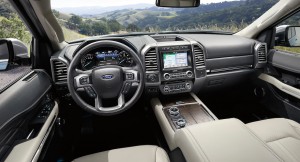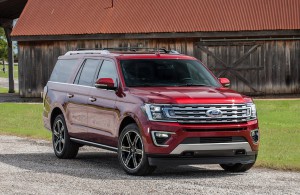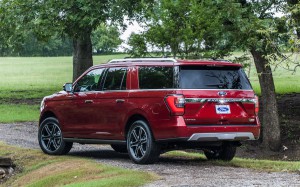When motorists a decade ago were faced with the one-two punch of rising gasoline prices and the recession, sales of big SUVs went in an eclipse.
Ford Motor Co., not surprisingly given the market signals that existed then, put the plans for updating its big SUV, the Ford Expedition, on hold where they stayed for a long time. But times change and the popularity of full-size SUVs has risen and Ford has responded with a complete update of the Expedition.
The end result is a vehicle that’s more comfortable, easier to drive and maneuver and offers a smoother ride than its predecessors without compromising its capacity to carry people and gear or even tow large trailers. Ford’s also added in more technology, including driver assistance features into the package, bringing up to date.
The Expedition is still basically a two-box SUV but Ford has massaged the sheet metal to give it a more contemporary feel and changed the grille and lighting at the corners to finish off the comprehensive facelift that gives the vehicle a more modern appearance when its sitting at the curb or moving through traffic.
(Ford investing $25M to boost output of popular Expedition, Navigator. Click Here for the story.)
Like all manufacturers, Ford takes great pains now to design wheels that give the vehicles more character and the Expedition that I drove was equipped with eye-catching 22-inch polished aluminum wheels. The exterior appearance also included privacy glass and roof rails.
On the inside, the Expedition’s interior, as you would expect is quite roomy and comfortable and nicely furnished with a nice mixture of textures and materials and while the instrument panel is very large, it isn’t intrusive. In addition, the seats on the Expedition are very comfortable and easy to adjust while the visibility from the driver’s seat is excellent. There was also a panoramic sun-roof that allows for natural light to filter into the cabin on sunny days or blocked if you happen to live in a climate that is too bright or too warm.
The Expedition also comes with a Bluetooth-equipped connectivity package, satellite radio and, on the version I drove, a voice-activated navigation system that was controlled by large and easy to screen in the center stack. The list of other feature includes one touch up-and-down windows on the driver and passenger side and heated seats in the first and second row. The second row seats also tip and slide to make it easier to get into the third row of seats when they are in use.

The Ford Expedition offers more than 40 new features and driver-assist technologies, including a Wi-Fi hotspot that supports as many as 10 devices at once.
The Expedition also comes with dual zone climate controls, the leather wrapped, heated steering wheel controls for the audio system and cruise control and pedal adjustments and a rotary gear-shift knob, which free up space around the center stack. There is also a noise cancellation system that minimizes the noise intrusion and the stress that accompanies it.
However, one of the most impressive features is the powertrain. Big SUVs traditionally have come equipped with some version of a V8 engine and some V8s are better than others. However, Ford has dispensed with V8 in the Expedition. Instead it is powered by a 3.5-liter EcoBoost engine that is equipped with auto-stop start system that is virtually invisible and matched to 10-speed automatic transmission.
(Click Here for more about Ford backing the push for SUVs with new 2020 Explorer.)
The Expedition is laid-out with rear-wheel drive but the powertrain I tested was equipped four-wheel-drive, which served the vehicle well on slick surfaces. The overall performance of the powertrain was impressive. The gears changed quickly and efficiently and there were more than enough power, 375 horsepower and 470 foot-pounds of torque so I never felt the vehicle was underpowered even when getting away from a full stop at a red light.
One of the constant criticisms of full-size SUVs throughout the years has been their woeful fuel economy. But while the Expedition is certainly no fuel-sipper, getting 17 miles per gallon in city driving and 22 mpg on the highway, its fuel economy represents a significant improvement. Its 19 mpg combined fuel-economy rating is respectable, given the segment’s history.
Ford had equipped the version that I drove with a full array of safety equipment from a 360-degree camera and push-button start. Other features include an enhanced active park assist with side parking sensors, hands-free foot-activated lift gate, lane-keeping system, power-deployable running boards for easier ingress and egress for young and older passenger and a remote start system, which should come in handy during the next Polar Vortex.
A fully-equipped Expedition is expensive and the manufacturer’s suggested retail price of the version that I drove was $80,525 before the addition of the $1,295 destination charge that Ford tack on to the Monroney.
(For more about the new Expedition, Click Here.)
The Expedition isn’t exactly a vehicle for daily commuting although they are often used by commuters with busy, complex lives that involve hauling passengers and carrying gears as well those with major league hobbies that involve towing big boats or trailers of all descriptions.



